Virtual Reality provides a sense of the scale of each challenge, as well as a clear visualisation of what each part of the course will look like
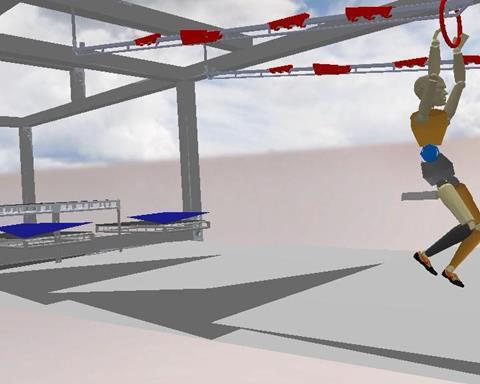
TV competition specialist ATS has turned to VR to get a truer feel for how future Ninja Warrior courses will look and feel for contestants, and those constructing the new obstacles and stages.
ATS designs and constructs a wide range of TV competition obstacles and sets, providing prototyping, testing, obstacle and scenic fabrication and set construction for shows including Ninja Warrior, Ultimate Beastmaster, Canonball UK, TKO and America’s Top Dog.
The company has designed and built all the obstaclies for American Ninja Warrior for the last decade.
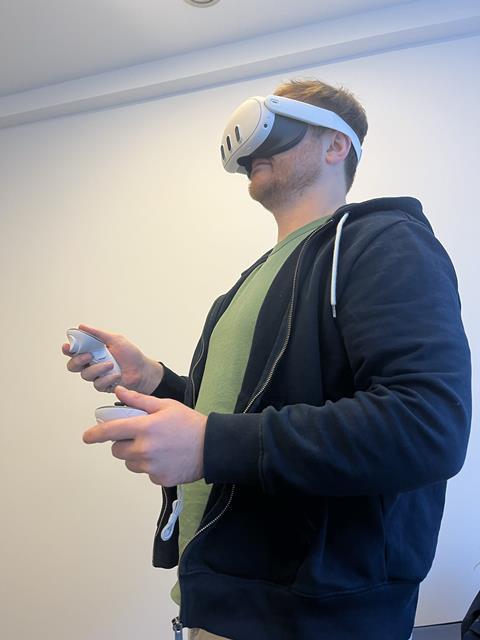
For the last year, ATS has adopted VR as a way to help bring to life proposed Ninja Warrior courses. The immersive element has also helped the company see pitfalls in their designs and where certain parts of new obstacle courses need to be tweaked before they can be taken any further.
The VR walkthrough is used to plan the builds and obstacles.
Broadcast Tech received a demo of the VR application from Shayna Waldman, development and production executive at ATS and Nate Moore, CEO of ATS. During the demo, Waldman explained: “We’ve created immersive Ninja Warrior course walkthroughs that can be viewed on the Meta Quest and provide the viewer with a sense of the scale of each challenge, as well as a clear visualisation of what each part of the course will look like.”
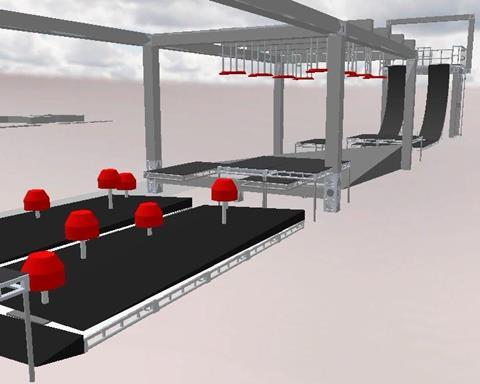
ATS creates the immersive version of the course in 3D model simulator, Sentio VR. The size of the renders – which is very large – means it has to present the walkthrough one obstacle at a time rather than showing the entire course in one go.
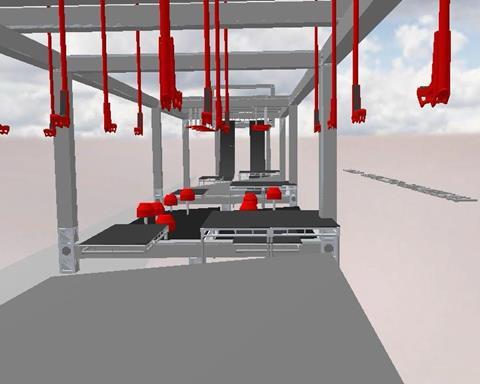
A lot of focus of the VR walkthrough is on the truss build – the metal structure each obstacle is built on. As well as helping visualise the course, the VR walkthrough provides a comprehensive list of the different sections of the truss, including each of the individual screws required.
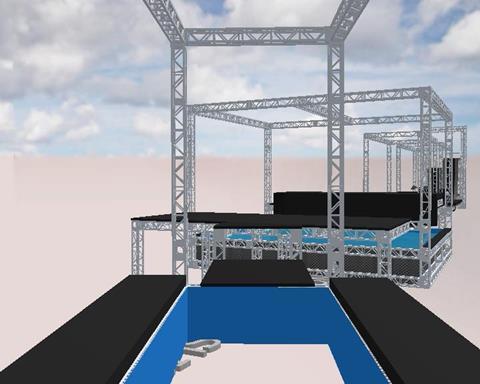
Moore told Broadcast Tech: “The VR walkthroughs really help us see the course from a new perspective – the eye cuts through to things you don’t see on the computer screen. If something is off height-wise, it’ll really jump out, which it won’t necessarily do on the computer screen. Also, any errors and things that need tweaking in the truss will be really obvious too.”
Moore believes the next iteration of the VR will increasingly focus on mixed reality, and getting the VR model to sit precisely in the physical environment in which it’s being shown. He says: “We’re about two years away from being able to go to any location and being able to see the course as if you’re walking through the sets in that physical environment.”
ATS uses the design application Sketch Up to model and pre-viz the course. It then uses Sentio VR, which is available as a plug-in in Sketch Up, to create the VR immersive version of the design. “Sentio VR enables you to upload models from Sketch Up into the cloud, put on a headset and jump straight into it in VR,” explains Moore.







No comments yet